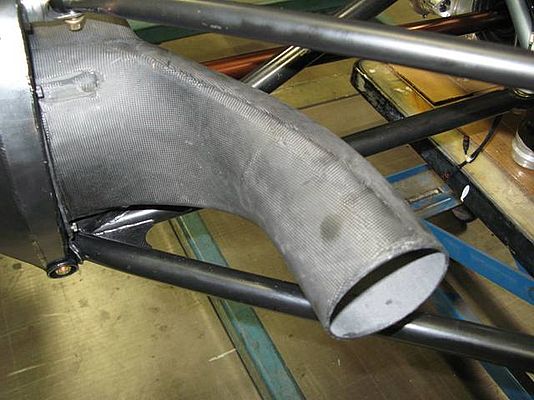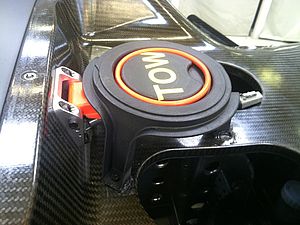CRP Group is involved as technological partner in several projects that go from motorsports to automotive. This article wants to illustrate how technologies like 3D Printing usually used in racing, can be translating into automotive applications.
This has happened with the constructions of parts for DeltaWing racecar and the construction of Energica headlight covers, CRP electric motorcycle. CRP has been adopted 3D Printing together with Windform materials for building the parts showing how this technology can be transferred from racetrack to road.
CRP decided to use 3D Printing and Windform materials to build the following parts of DeltaWing racecar:
- Bespoke electronics enclosures
- Electrical breakout boxes
- Transmission seal covers with integrated pressurized oil feed passages
- Tow hook plinth
Windform XT 2.0 was the material mostly used for the manufacturing of these parts as it represents the top level material for its mechanical and thermal characteristics. The use of 3D Printing and Windform materials were fundamental to shorten the timing of car construction. In this case CRP Technology and CRP USA worked to support step by step the technical staff of the Delta Wing team in order to help them finding the best solution.
The carbon fibre reinforced Windform XT 2.0 was used to construct the gearbox side covers too. The DeltaWing utilized a non- "stressed member" engine and gearbox to reduce the structural requirements of the assembly as well as reducing the vibration loads introduced into the lightweight car.
The specific stiffness of the material did not affect the weight of the vehicle and this is fundamental for a racecar.
With 3D Printing technology the staff of DeltaWing was able to make a very complicated geometry, keep gentle radius's in the oil passages, and get rid of all unnecessary material without introducing great cost or lead time in the parts.
Windform materials are chosen for motorsports application as well as automotive applications. A clear example of the use of 3D Printing and Windform materials in the automotive field is represented by the construction of headlight covers of Energica, the eletric streetbike.
The realization of the covers started from the use of reverse engineering. This technology represents a fundamental tool to recreate, design samples that are no more at disposal from the point of view of the industrial production, or to create pieces that are unique in the world. Reverse Engineering represents a considerable advantage in the reduction of engineering timing in order to obtain high-quality products. Reverse Engineering can be used as the starting point for development of a product.
Once CRP chose the style of headlight cover, the part was made of polyurethane, subsequently scanned with the FARO laser. The instrument connected to a system of acquisition and processing of images, led to the determination of the cloud of points of the covers by using a scanner to a single camera (mono). Then CRP obtained the STL file of the cloud of points of the cover, this latter was then imported to CAD for the realization of the final geometry of the component.
The Windform GF 2.0 is the material used for the realization of the headlight covers which was smoothed manually and then painted silver with strong aesthetic impact.
The demanding market of automotive needs technical partners that can increase flexibility and timing of realization of new projects, without losing in quality and assuring prompt delivery.
The advantages of 3D Printing for the automotive are mainly related to the extreme speed in execution, closely connected to the mechanical characteristics of state-of-the-art materials. Windform material parts are closer and closer to those obtained with traditional building technologies which are used for large production series. Yet, in a highly specialized market where functional prototypes are getting a direct extension of the construction project, the flexibility and production timing of resistant, light, accurate, highly complex parts with a strong aesthetic component are becoming a Must for companies want to remain competitive. Windform materials together with 3D Printing can offer functional materials with quite marked differences and companies as well as those of automotive can choose between stiffness, elasticity, resistance to high temperatures, resistance to pressure, resistance to liquids (water, oil, gasoline), lightness, toughness and wear resistance. So that designers and planners can choose the appropriate material, and constructing a functional prototype almost a finished part in a few days after the conclusion of the CAD project.




















